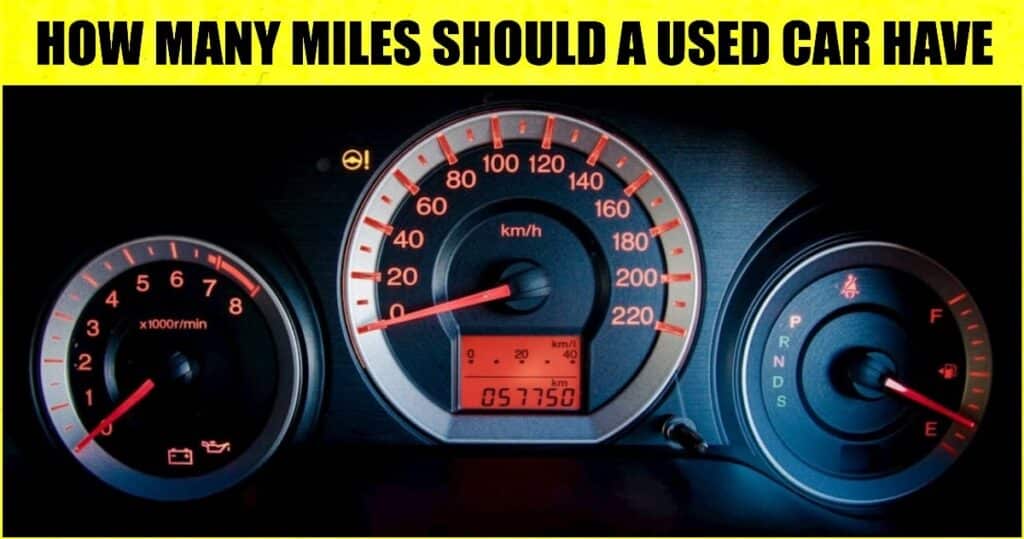How Many Miles should a Used Car Have? | What’s a Good Mileage on a Used Car?

Introduction
A car’s mileage is a significant perspective while purchasing utilized. While purchasing a used car there are plenty of things you need to consider, from the body style and fuel type to the color and the gearbox. The number of miles a car has covered is likewise a significant factor. It’s a smarter choice to make a judgment in light of the mileage that the car has proactively placed in, as opposed to simply taking a look at how old the car is. This is on the grounds that the car’s mileage affects the suspension and the engine the most, and that implies that the service life of a used car is profoundly dependent on it.
What are the Average Miles for Used Cars?
While taking a look at the mileage of a used car, it would be smarter to perceive how much mileage you are more likely to get out of the car than how much mileage the car has proactively gone through. To do this, you would have to think about the age of the car.
Car owners drive or cruise around 12,000 every year on average, which is a decent guideline for deciding the number of miles a used car ought to have. For instance, on the off chance that the vehicle is 4 years old, it ought to have 48,000 miles or less.
While purchasing a used car, individuals will generally experience issues checking the worth of the car.
Certainly, a secondhand car will be easier on your wallet than a brand-new car, yet how would you decide whether the used car merits the cash you pay?
All things considered, there’s very little you can see on a used car other than the car’s appearance and the mileage on the odometer. It’s impractical to determine what sort of repairs and maintenance it has gone through or the places it has been.
What’s a Good Mileage on a Used Car?
The overall principle of thumb to calculate a reasonable mileage is to expect that car owners drive something like 12,000 miles every on average.
This truly intends that assuming that you are getting a car that has been utilized for a considerable length of time (e.g. 7 years), the reasonable mileage on the car ought to preferably be:
12,000 x 7 = 84,000
This implies that if the car has considerably fewer or higher miles than 84,000, almost certainly, the car will deal with certain issues. In any case, it is essential to remember that mileage is only one factor in this equation or condition.
You want to remember a few different factors prior to purchasing a used car that might have impacted the manner in which you check the mileage out. For example, has the vehicle been with a single owner or numerous proprietors? Is the car suited for roadways, or has it been driven mainly in the city? Is it true or not that you are getting a rental car as a secondhand car? Responding to these inquiries could assist you with measuring whether the mileage that you see on the odometer is a decent reading or not.
What Number of Miles on a Used Car is Too Much?
Many individuals looking for utilized cars will quite often pass on the cars that have higher mileage. In any case, this probably won’t be a particularly great idea. There are a few reasons for this. Technology has advanced throughout the long term, and that implies that cars today last much longer than they used to. A used car is likewise not prone to devalue however much a brand-new car would, and that implies that the car’s high mileage has flattened the depreciation curve. For instance, ponder a 10-year-old car that has 90,000 miles added to its repertoire.
Going by the mileage, it appears to be a very decent idea. Notwithstanding, assuming that this car has been driven by four or five owners previously, it’s advisable to avoid it. This is on the grounds that it is doubtful that all previous owners would have maintained the car with the very meticulousness and constancy that a single owner could have placed in. This implies that regardless of whether it has a lesser mileage added to its repertoire, this car is likely ready for a scrap.
Conclusion
It’s likewise essential to remember that a car with a higher mileage implies that it has been driven enough for regular fluid changes and the burning of carbon build-up to have taken place, something which you won’t find in that frame of mind in the car with low mileage. It wouldn’t be astute to contrast two vehicles and a similar mileage reading on the odometers without first knowing the sort of mileage the cars have gone through. For instance, assuming that one of the cars has been driven on highways or less congested regions, it is likely to be in better condition over one driven for the most part in congested areas with sluggish traffic is logical.
Another essential factor that you need to consider is the fact that how the previous owner was dedicated when it came to support and maintenance. It’s implied that a well-maintained car with regular servicing would be in preferable condition over one with similar mileage that hasn’t been regularly maintained.
Content Source: – stilt, carwow
Image Source: – brokerlink













